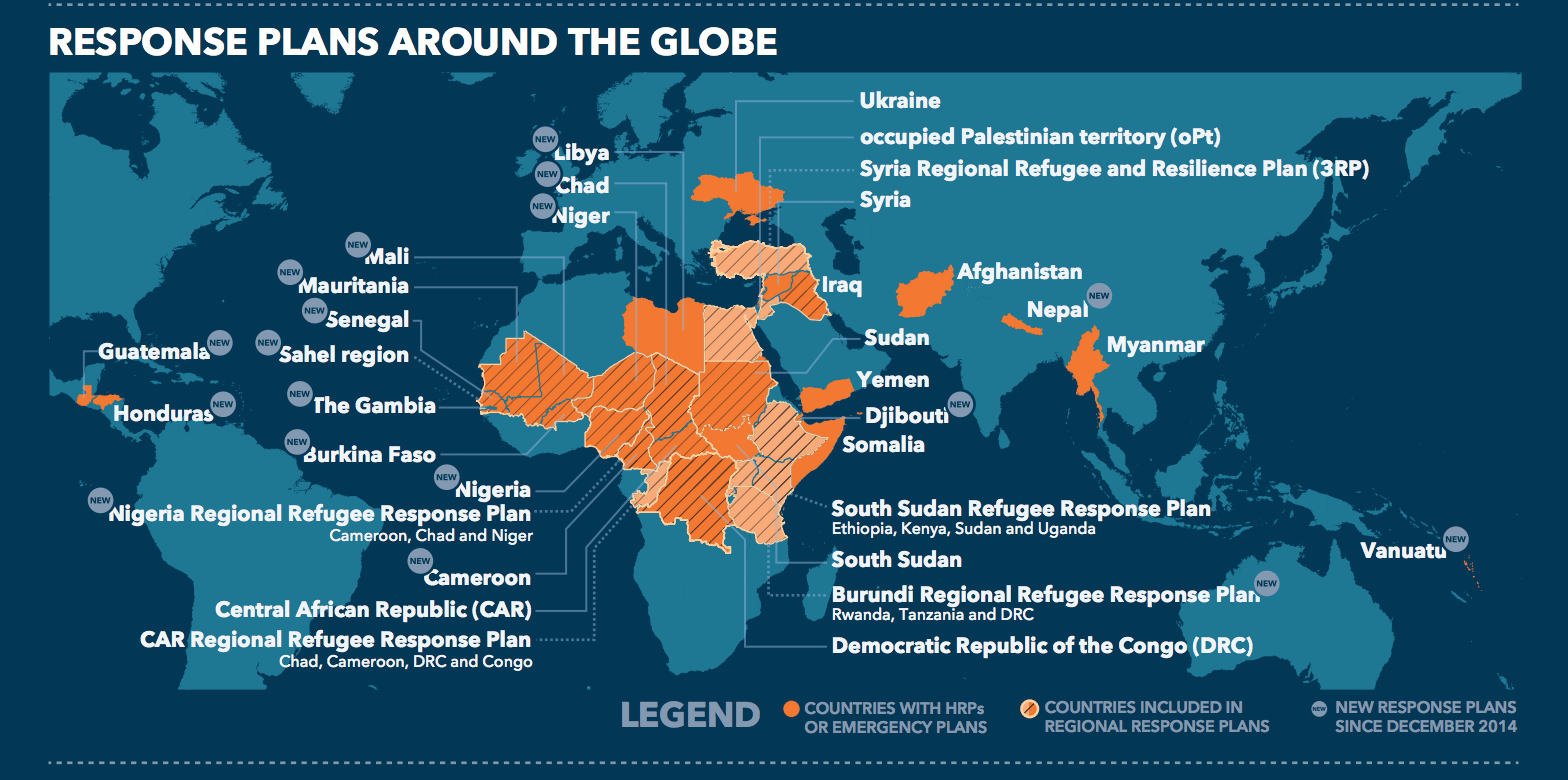The UN Office for the Coordination of Humanitarian Affairs released it’s mid-year report of the response to humanitarian emergencies around the world. Taken together, these graphics do an excellent job of telling the story of a humanitarian system under enormous stress.
1) Here are all the crises around the world for which the UN is coordinating the international response.
2) And here are the crises, listed in alphabetical order, and displayed by the number of people affected. (“RRP” and “3RP” refers to “regional response plans,” which are the efforts to care for people affected by refugees and displacement in the surrounding countries.) In all nearly 80 million people are currently affected by manmade and natural disasters around the world.

And now, here’s a global overview of where funding needs stand. In other words, how much money requested by aid organizations to care for these 80 million people has actually been received?

That’s a bad percentage. But if you drill down the numbers a bit, you can see that for some crises, the response has been virtually non-existent.
The Gambia is the world’s most under-funded humanitarian emergency.

Poor rainfall in The Gambia has resulted in below-average agricultural production levels. As a result, it is expected that over half a million people will be food insecure starting in June, including 178,000 who need immediate assistance as they would have reached or surpassed crisis levels of food insecurity. Due to the reduced production of cereals, especially rice, food prices have continued to increase. Access to improved water sources and sanitation remains a major challenge in rural areas, especially in Upper River and Central River regions, which have the highest rates of underage five mortality and malnutrition. Economic difficulties have sharply increased due to a 60 per cent reduction in tourism because of the Ebola virus in neighbouring counties, policy-reform shortcomings and deterioration in the macroeconomic environment over the last two years.
So how does OCHA’s mid-year report compare to previous years? Are the funding trends generally positive? Is 2015 an outlier?
Sadly, no.

Since the outbreak of the Syrian civil war in March 2011, the needs of relief organizations have increased dramatically. The funding levels have stayed pretty flat. That gap between needs and actual funding committed means less food, less shelter, and less medicine for people affected by crises worldwide.
The “funding gap” translates pretty directly to human misery. And it’s only increasing right now.

